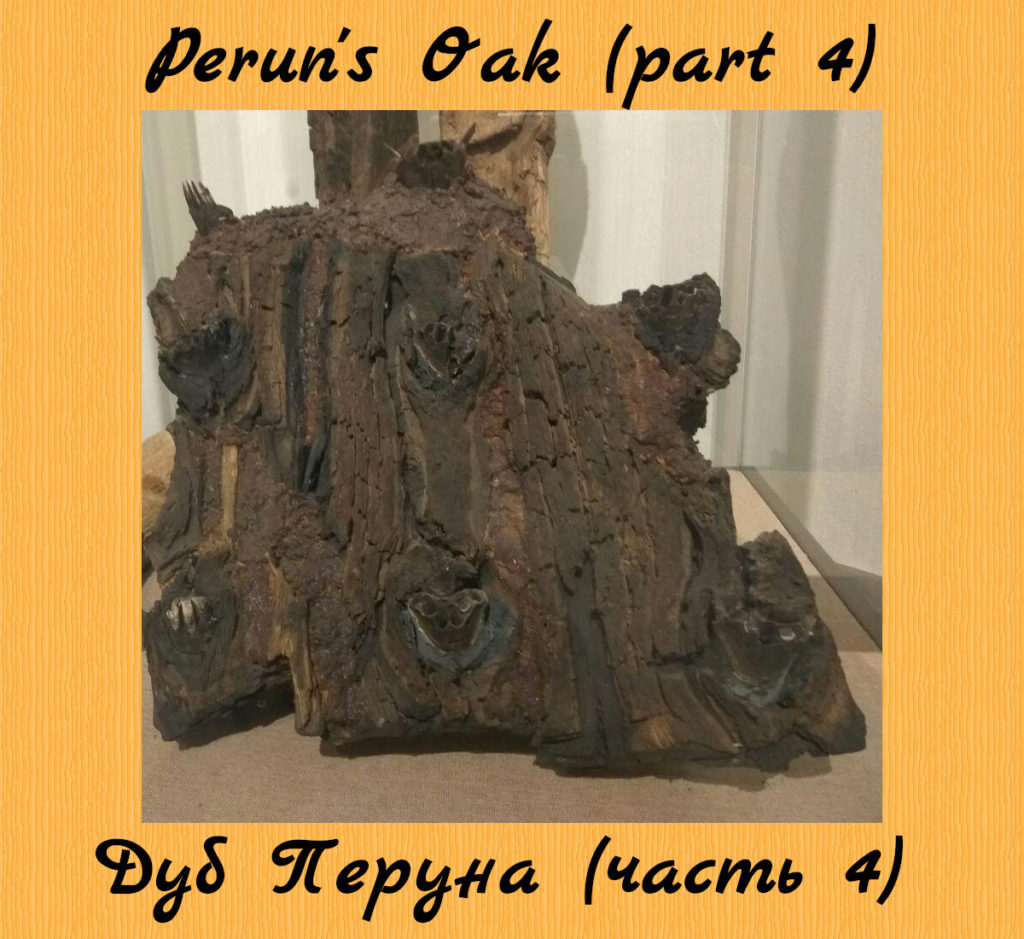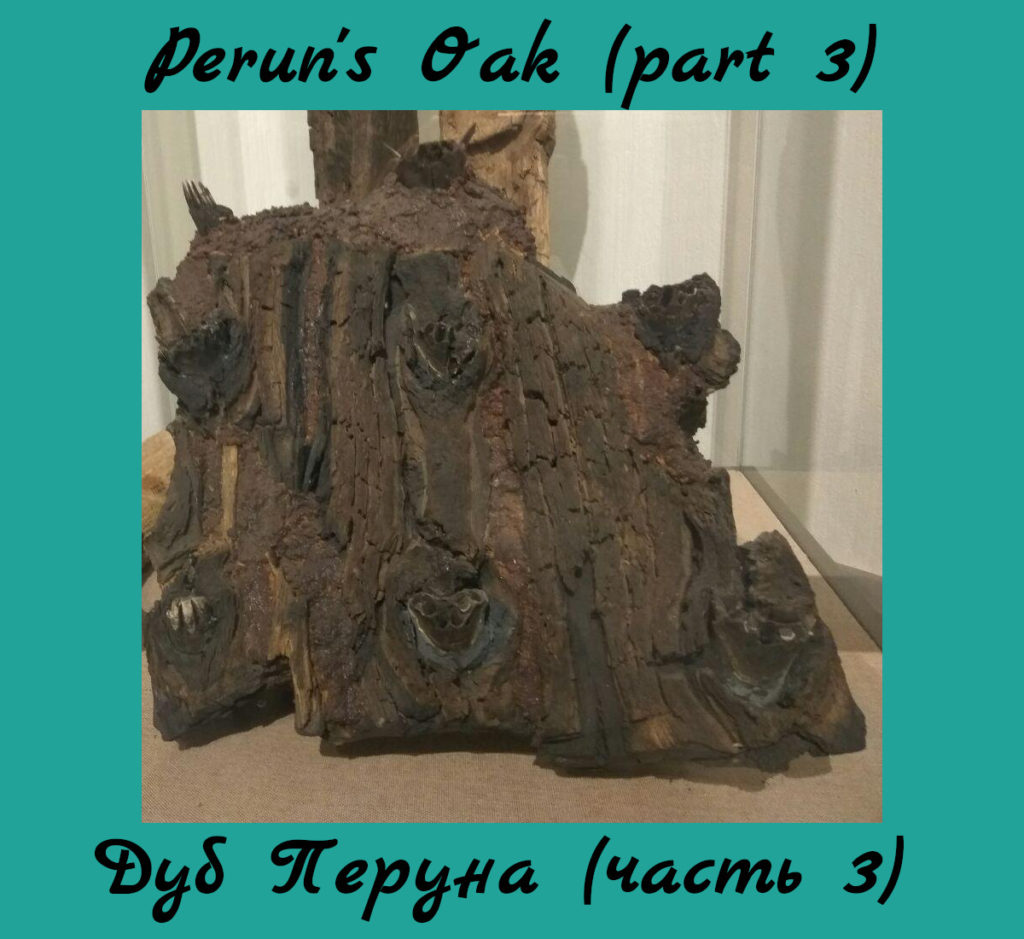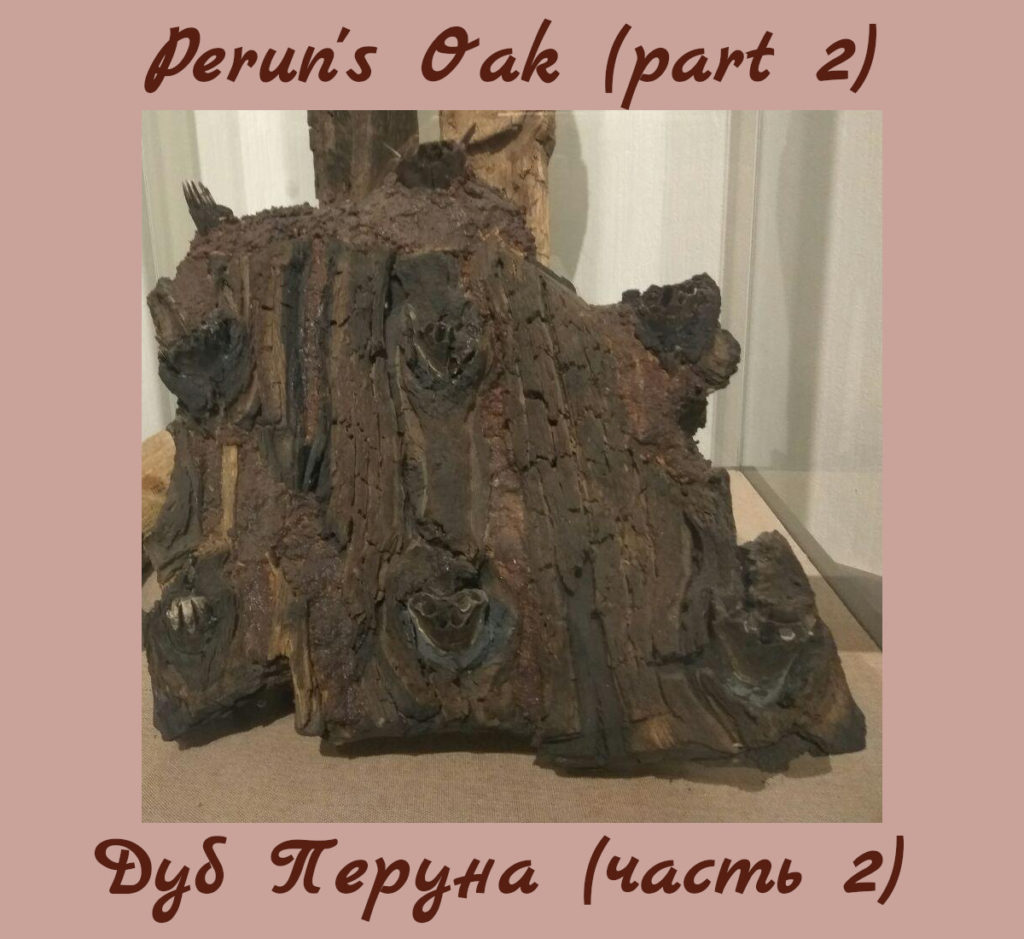Boar worship evidence was repeatedly found in multiple archaeological sites. In the burial mounds of the Dnieper region, wild boar tusks amulets are often found. In the Kiev necropolis, they were found both in ordinary and in rich graves.
ꏍ
In 1908, 1975 and 1984 ancient oak trees with boar jaws affixed in them, were elevated from the bottom of Dnieper and Desna rivers. These sacred oak trees are dated from VIII to X century. They confirm a close connection between the cults of the boar and the sacred oak in Slavic mythology. Researchers believe that these sacred oaks with embedded boar tusks were dedicated to the god of thunder and lightning Perun. It was also observed that, as a rule, pagan sanctuaries were located at the intersection of trade routes, before and after especially dangerous and difficult parts of a caravan path (for example, the Dnieper cascades), or at the beginning of the next stage of a long (and often dangerous) journey.
ꏍ
Sources:
G. Yu. Ivakin «The sacred oak of the pagan Slavs», 1979
K. V. Bolsunovsky «Perun’s oak», 1914
Photo: ancient oak bark with affixed boar jaws in the Kiev History Museum





